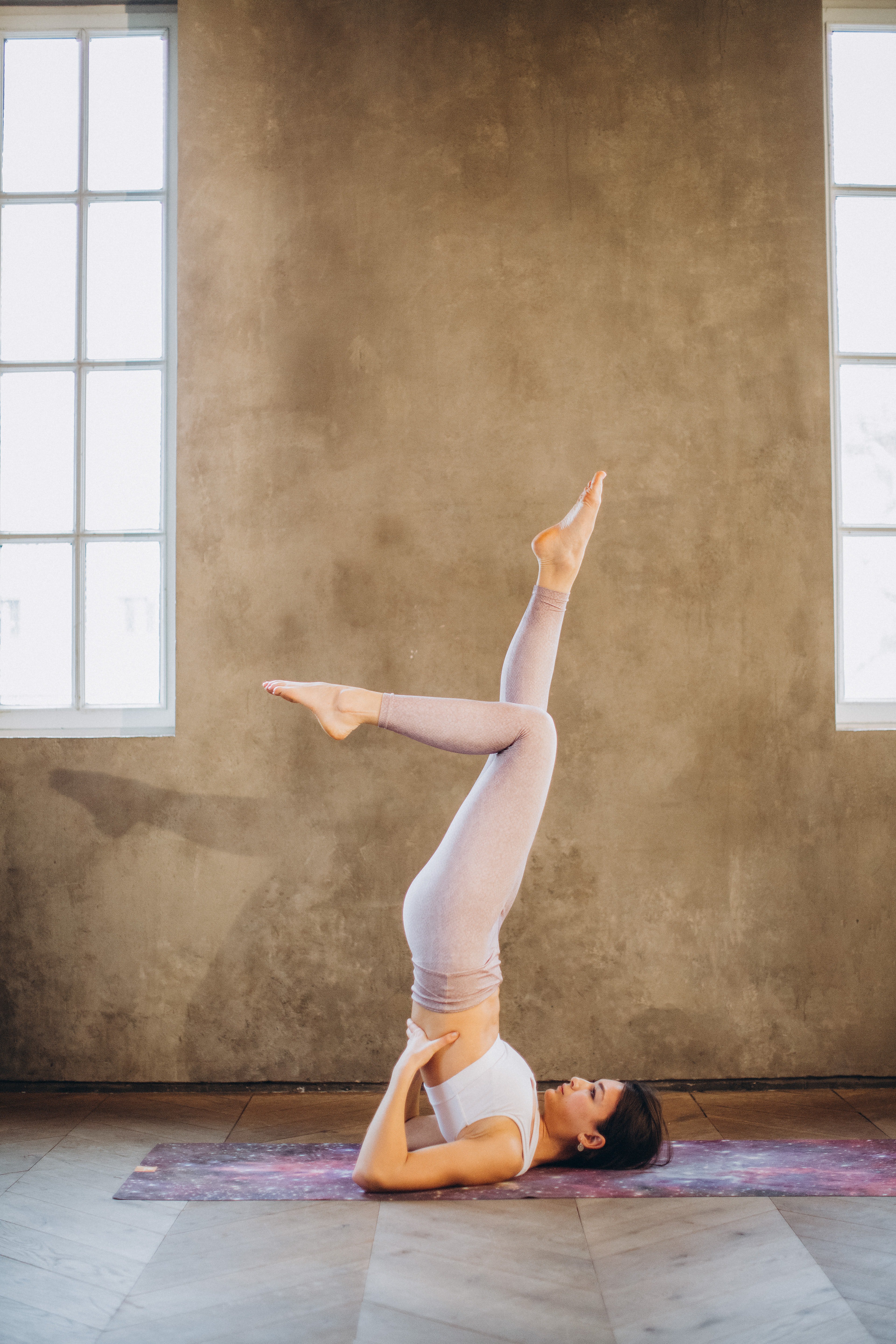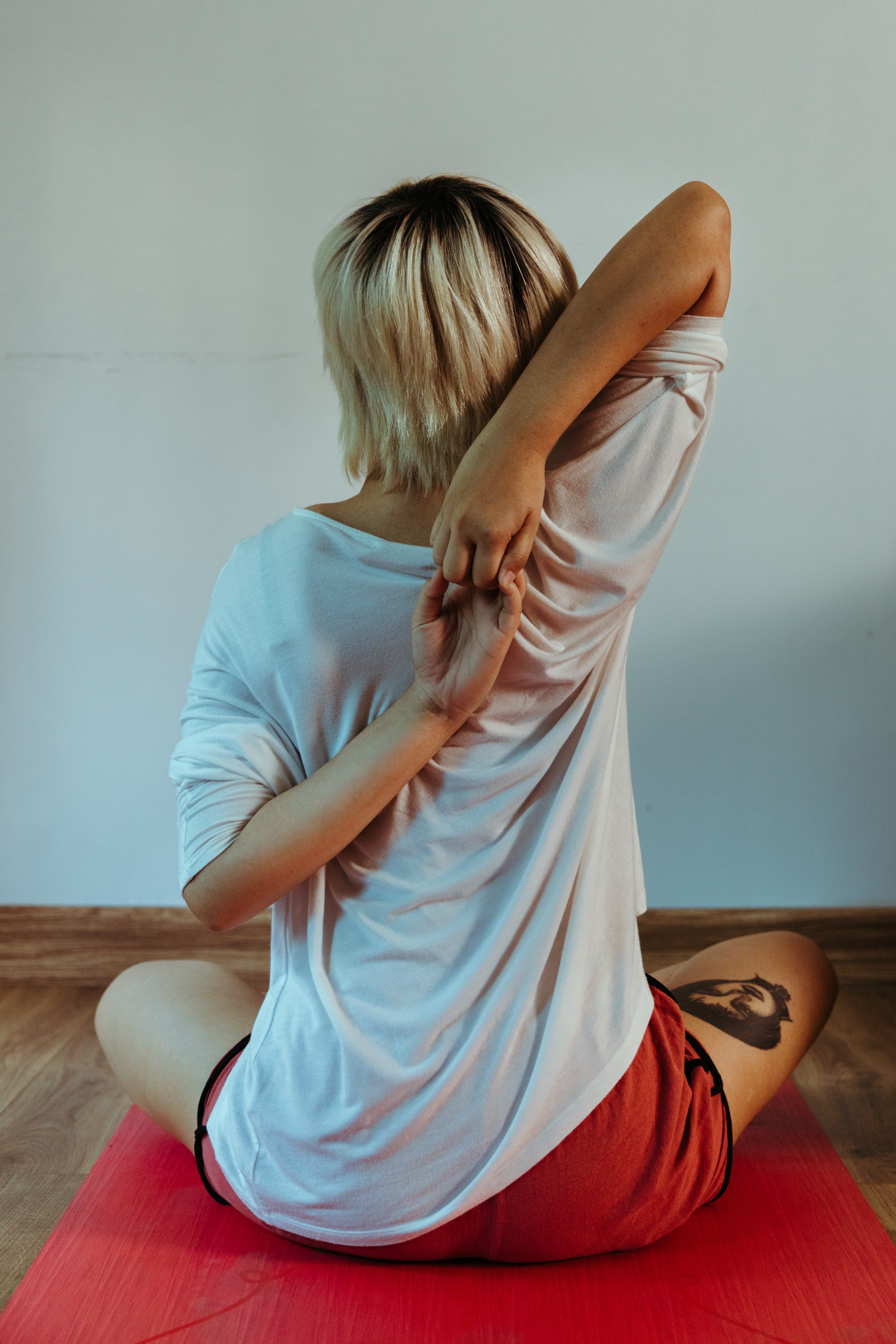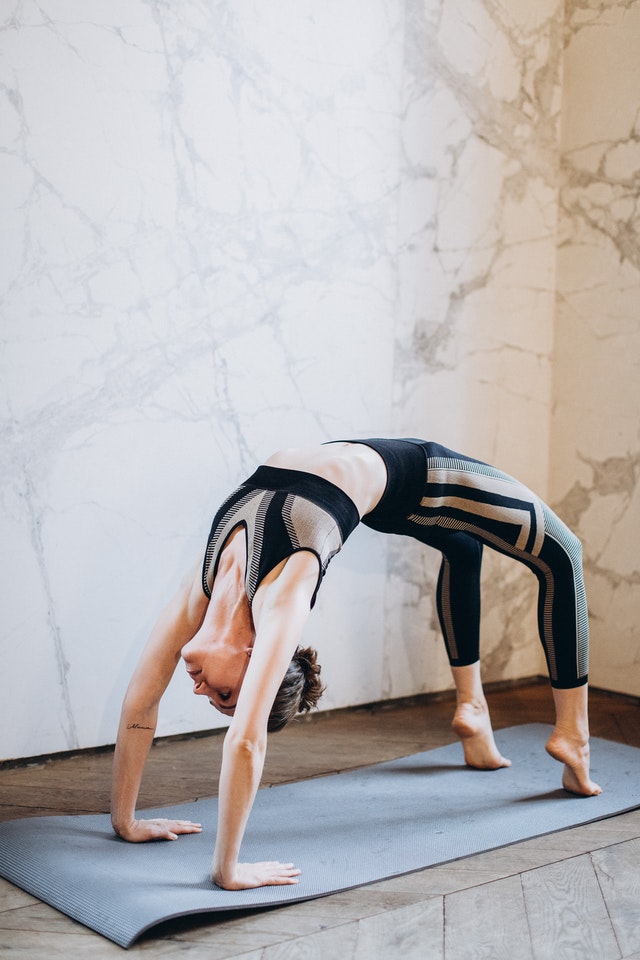Yoga To Improve Your Posture: 5 Poses You Should Perform Every Day
6 minuteRead

With a pandemic still sweeping through the world, most of us are still working, studying, or conducting our affairs from home. And at-home decorum dictates contorting yourself into various awkward positions while sitting in front of the television or being on our laptops and phones. Some of us go so far as to carry this practice straight to our places of work, restaurants, and friends’ homes as well. How else does one explain scores of people huddled over their phones and laptops for as far as the eye can see?
Despite being fairly common, bad posture can be all fun and games until you have to spend a lot of your hard-earned money trying to ease back pain, neck pain, headaches, and even poor sleep. If you’d rather be spending on food, like us, we’ve got a solution that’s helped many - yoga. In fact, if you sit down to Google the words “how to improve posture,” there’s a good chance you’ll come across many videos titled “yoga for posture.” We’ve condensed them down to a few that you can start off with. By performing these few poses every day and/or incorporating them into your regular exercise routine, you will see a visible change in how you sit, stand, and hold yourself without having to consciously do it.
1. Shoulder Stand (Salamba Sarvangasana)

This pose opens and strengthens the upper shoulder muscles and stretches the back of the neck and, as such, helps put shoulders and back into alignment. As an added bonus, it promotes blood circulation to glands in the upper body. Here’s how you can go about it:
1.Stack two folded blankets and lay on your mat with your shoulders aligned with and on the blankets. Your head should be off of the blankets.
2. Place your hands beside your hips on the floor, bend your legs and move your legs so your feet touch the floor behind your head, also known as Halasana.
3. Bend at the elbows and place your hands on your low back creating a shelf of sorts.
4. Extend one leg, keeping your balance, and follow it up with the other leg.
5. For more stability, walk your hands further up your back and feel your chin reaching towards your chest to support the upper back.
6. Keep your gaze upward and your neck straight.
7. Ensure your hips are over your shoulders, your feet over your hips. Get someone to spot you, just to be sure that your legs are perpendicular to the floor.
8. Stay in the pose for up to 10 deep breaths.
9. Slowly bring your feet back over your head to release the pose.
2. Cobra Pose (Bhujangasana)
This pose strengthens the spine and stretches the chest and shoulders. It also opens up the heart and luns, soothes sciatica, and helps release tension in the spine. Cobra pose is often recommended to improve spinal mobility, strengthen the muscles that support the spinal muscles, and decrease any stiffness in the lower back. As an added bonus, it can help strengthen your arms and improve your mood. Here’s how you should perform it:
1. Lie on the mat face down, place your palms flat on the ground directly underneath your shoulders.
2. Bend your elbows straight back and hug them into your sides.
3. Hold your breath for a moment, look straight down at your mat with your neck in a neutral position, and anchor your pubic bone to the floor.
4. Inhale and lift your chest off of the floor.
5. Roll your shoulders back, keep your lower ribs on the floor, and make sure your elbows continue to hug your sides.
6. Keep your neck neutral and your gaze on the floor.
7. Hold for 5 breaths, exhale and lower your body back to the floor.
3. Wheel (Urdhva Dhanurasana)
This pose is recommended for opening up the chest and improving spinal mobility. But it does far more than just that. It strengthens the arms, shoulders, and legs as well. Here’s how you can go about performing this pose:
1. Lie on your back, bend your knees, and bring the soles of your feet onto your mat, close to your buttocks.
2. Ensure your feet are parallel to each other and hip-distance apart.
3. Bend your elbows and bring the palms of your hands over your head, placing them directly behind your shoulders with your fingertips pointing towards your feet.
4. Inhale and press down into your palms and feet while lifting your shoulders and hips off of the floor.
5. Slowly bring the crown of your head to the mat, ensuring you don’t put too much weight on the neck.
6. Keep using your hands and feet for leverage
7. Breathe deeply as you stay in this position, making sure that your elbows are staying parallel to each other and not splaying out to the sides.
8. Straighten your arms and lift your head off the floor while keeping your feet parallel and knees in line with your feet.
9. Hold this position for a few breaths and reach your chest towards the wall towards the ceiling and the wall behind you simultaneously.
10. Exhale and begin to straighten your legs.
11. Tuck your chin into your best and lower down slowly, allowing the knees to knock together as you rest.
12. Perform this in sets of 3.
4. Cow (Gomukhasana)

The cow face pose stretches the shoulders, arms, and chest. Instructors often recommend it to open your chest, help correct posture, and improve flexibility in the spine. Here’s how you should perform it:
1. Sit straight on the ground with your legs stretched out in front of you.
2. Gently bend your left leg and place your left foot under your right buttock.
3. Sit erect on the ground with your legs stretched out in front of you, preferably in Dandasana.
4. Now gently bend your left leg, and place it under your right buttock. Fold your right leg and place it over your left thigh.
5. Slide your knees towards the centerline, stacking the right knee directly over the left.
6. Gently fold your left arm behind your back and your right arm over your right shoulder.
7. Take a deep breath and stretch as much as you can until both your hands meet.
8. Keep your trunk erect and expand your chest as you lean back slightly.
9. Hold this position for as long as you can while breathing slowly and deeply.
10. Slowly bring your arms back to neutral and unfold your legs and repeat on the other side.
5. Tiger (Vyaghrasana)

Source: PranaYoga
This pose warms up and stretches out your spinal muscles while also strengthening the core. It’s also known to improve balance and open up your chest, shoulders, hips, and thighs. Here’s how you can go about performing this spine-strengthening pose:
1. Get on your hands and knees in a tabletop position.
2. Inhale and bring your right knee to the forehead while rounding the spine.
3. Exhale and reach the right foot up towards the ceiling while arching the spine and looking straight ahead.
4. To up the intensity, reach behind you, grab your right foot with your left hand and lengthen towards the ceiling.
5. Hold this position for as long as you can and then slowly lower your arms and legs to release.
6. Once your knee is back down on the floor, repeat on the other side.
A good way to make the best out of all these poses is to incorporate them into regular, 30 minutes-1 hour-long yoga practices. Be sure to pay attention to your form and try not to push yourself to do a pose if your body protests against it. Get someone to spot you to ensure you don’t hurt yourself and if you have a chronic health condition or a spinal injury, consult your doctor and get their a-okay before trying any of these.
Write, Record and Answer! Consume Unlimited Content! All you need to do is sign in and its absolutely free!
Continue with one click!!By signing up, you agree to our Terms and Conditions and Privacy Policy.












